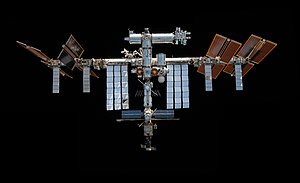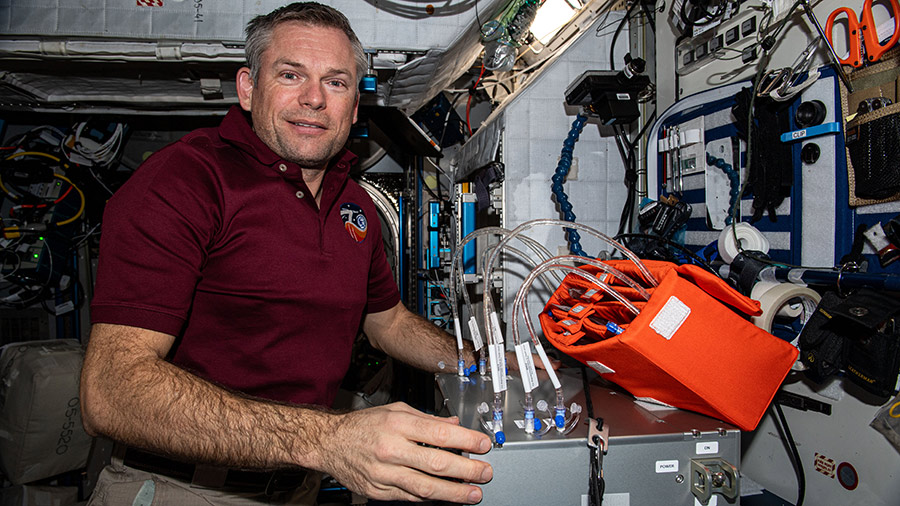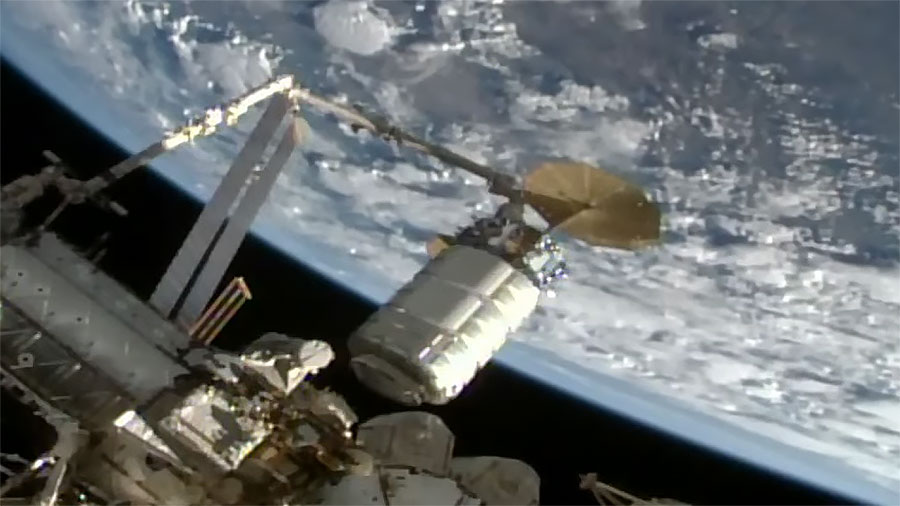
Cargo operations, health investigations, and spacesuit preparations topped Thursday’s schedule aboard the International Space Station as the Expedition 70 septet gears up for another crew arrival.
The morning kicked off with NASA Flight Engineer Michael Barratt assisting Flight Engineer Jeanette Epps, also from NASA, with a blood sample collection for the Immunity Assay investigation. Afterward, Epps processed the blood samples to monitor how spaceflight impacts stressors on cellular immune function.
Barratt was then joined by NASA Flight Engineer Loral O’Hara to swap cargo in and out of the Cygnus space freighter. In the afternoon, O’Hara switched gears to complete some spacesuit work that began earlier this week. She installed battery packs, and checked the audio system, power and data cables, thermal covers, and helmets. O’Hara then powered up the spacesuits to assess if all components were working properly.
NASA Flight Engineer Matthew Dominick set up equipment for two different health investigations throughout the day. He first set up the Cerebral Autoregulation investigation, which measures blood flow in the brain before, during, and after spaceflight to provide insights into how the brain regulates its blood supply in the microgravity environment. He then moved on to prepping ultrasound equipment for eye exams before completing some crew orientation activities.
Once the ultrasound equipment was set up, Commander Oleg Kononenko and Flight Engineer Nikolai Chub of Roscosmos took turns conducting eye exams on one another. Flight Engineer Alexander Grebenkin, also from Roscosmos, spent his day running a distillation cycle on the water processor, familiarizing himself with computer systems, and replacing condensate lines in the ventilation system.
Three crew members—NASA astronaut Tracy Dyson, cosmonaut Oleg Novitsky, and Flight Engineer Marina Vasilevskaya of Belarus—are preparing to launch aboard the Soyuz MS-25 spacecraft near the end of March.
The space station is orbiting slightly higher after the ISS Progress 87 thrusters fired for 18 minutes and 17 seconds Thursday morning. The orbital reboost sets up the correct phasing for the upcoming Soyuz arrival.
Learn more about station activities by following the space station blog, @space_station and @ISS_Research on X, as well as the ISS Facebook and ISS Instagram accounts.
Get weekly updates from NASA Johnson Space Center at: https://roundupreads.jsc.nasa.gov/
Get the latest from NASA delivered every week. Subscribe here: www.nasa.gov/subscribe




